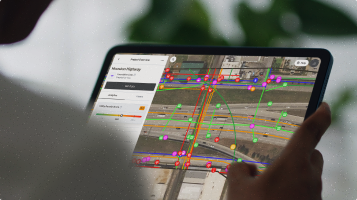Post-COVID global infrastructure investments
Written by

Published on
April 15, 2021


Table of contents
One of the many repercussions of the global pandemic was a decline in global infrastructure sector activity during 2020, due to the impact of coronavirus and lockdown restrictions.
Governments reassessed spending commitments and re-prioritized PPP's, projects under construction suffered delays due to supply chain issues and planned projects were sometimes paused or canceled altogether.
Fast forward a year later, we are seeing increased activity in the sector with a greater proportion of projects being green-lit at the desktop stage than in the last 30 years.
For many countries around the world infrastructure projects are considered critical as governments are motivated to fund such projects in order to boost economic recovery and job creation.
In a global perspective one of the key drivers of infrastructure growth are green developments fueled by growing demand for renewable energy and governmental efforts to meet carbon reduction targets.
Breaking down data of infrastructure projects announced last year reveals that the majority were in the power sector (63.7%), followed by transportation (11.4%), leisure and property (7.9%), and oil and gas (5.6%). Considering the EU’s €1trn European Green Deal plan to invest in sustainable energy projects, it is understandable why most of these projects were in Western Europe (604) but not discounting an impressive total of 297 projects announced in Latin America and no less than 257 in South-east Asia.
In the U.S the president has just revealed his “Build Back Better” plan proposing over $2 trillion of government investment with a lot of focus on public infrastructure and infrastructure development projects.
The plan outlines $115 billion investment in projects to rebuild bridges, upgrade ports, airports and transit systems as well as modernizing over 20,000 miles of highways, roads, and main-streets.
Another goal set by the president's plan is to build a high-speed broadband infrastructure and to reach 100 percent coverage across the nation. The plan also includes sections dedicated to renewing the electric grid, redevelop idle real property and spur the build out of critical physical and civic infrastructure.
According to projections from insurance company Swiss Re, of the $66bn in infrastructure spending expected between 2021 and 2040, much of this will be driven by emerging Asia (including China), which will account for $35bn in infrastructure spending over the period.
In Asia, despite the economic slowdown, infrastructure projects increased by 5.5% in 2020 and Infrastructure development is a key growth driver as sustainable projects are those most likely to increase in demand.
For example, Vietnam connected more than 9 GW of solar power to the national system over the course of 2020 – increasing the country’s overall solar capacity eight-fold relative to 2019 – and in June that year the Vietnam government approved a further 7 GW in wind power projects.
Such a surge is sure to highlight the need for better and smarter complementary services such as utilities mapping.
We can all only imagine how many square miles of land are planned to be surveyed and mapped in preparation for development or engineering works, and how many man hours, technical resources and funds will be allocated to support these efforts around the world.
As a leading innovator in the field, 4M Analytics is primed to bring real change to the current market status quo and set a new industry standard relying on highly accurate data and time efficient methodologies making its 4Map Platform the cutting edge in utilities mapping technology.
Recent blog posts

Our Newsletter
Join 7k infrastructure professionals
Get monthly insights on ways to build smarter, faster and safer with Utility AI.

.avif)




